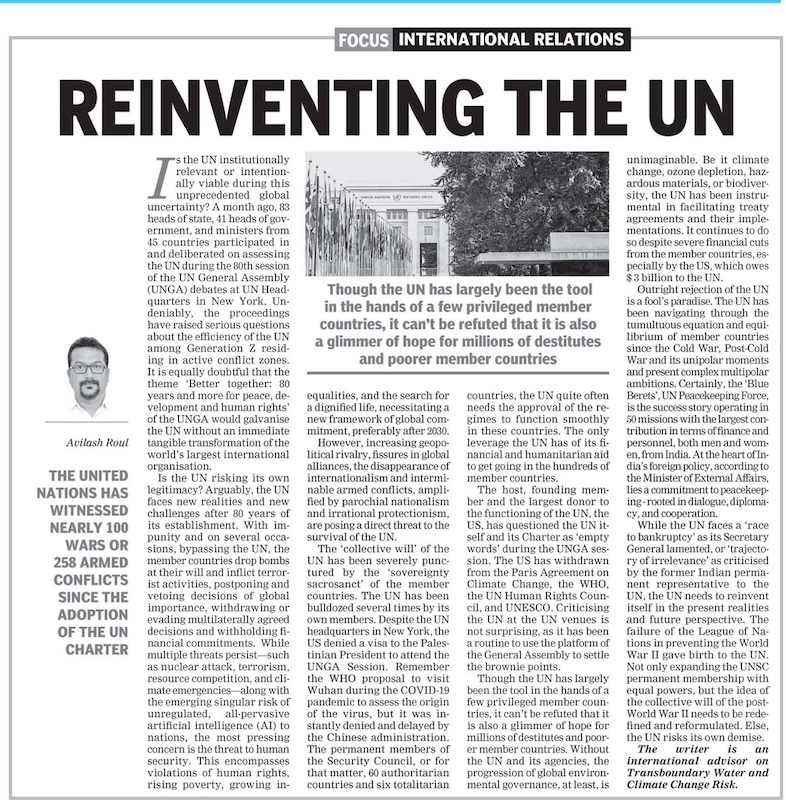From Gaza to Kashmir: The Limits of Trump’s Conflict-Resolution Diplomacy
Since its inception in 1901, the Nobel Peace Prize has primarily recognised contributions to four broad areas: arms control and disarmament, peace negotiations, the advancement of democracy and human rights, and efforts to build a more orderly and peaceful international system. In the 21st century, the Nobel Committee has also expanded its scope to include initiatives addressing climate change and environmental threats, viewing them as integral to global peace and stability.
Biological Disasters, Climate Extremes, and India’s Air Power–Driven Humanitarian Outreach
India’s recent humanitarian intervention in Sri Lanka following Cyclone Ditwah once again underlined the growing centrality of the Indian Air Force (IAF) in regional disaster response. In November 2024, the IAF deployed IL-76 and C-130J transport aircraft to evacuate 335 stranded Indian nationals from Colombo while simultaneously delivering emergency relief supplies.
COP30 in Belém: Fragmented Multilateralism, Erosion of Climate Mitigation and Inclusion of Trade
Has the 30th edition of the UN-sponsored climate summit, COP30, been delivered as initially expected? Indeed, trust in the Paris Agreement has been maintained and partly fulfilled. Confidence in multilateralism remains strong despite the absence of the second-largest emitter of Greenhouse Gases (GHG), the US. However, the divisions among coalition member groups within COP remain as sharp as they have been in 30 years of climate negotiations.
Ricin Threat and the Jihadist Conspiracy against India
The Gujarat Police’s Anti-Terrorism Squad (ATS) on 8 November 2025 arrested Ahmed Mohiyuddin Saiyed, a doctor from Hyderabad (Telangana), along with firearms and nearly 4 kg of castor-bean mash, which is used to extract ricin, a bio-toxin, at Adalaj toll plaza on Ahmedabad–Mehsana Road in Gandhinagar. His call records led to the arrest of two Uttar Pradesh residents, Azad Suleman Sheikh and Mohammad Saleem Khan, in Banaskantha, Gujarat.
South Asia’s Quiet Refugee Crisis: Caught Amid Law, Identity, and Climate
I grew up in Guwahati (Assam), where questions of identity were never theoretical. They surfaced in school registers, land records, police verifications, and anxious family conversations. Some people carried documents with them like talismans. Others lived in fear that a single missing paper could erase their place in the only country they had ever known. Long before I understood the politics of migration, I witnessed its emotional cost.
Belem climate summit: Bridging North-South divide will be uphill task for Brazil
Brazil is leaving no stone unturned to make Cop30 remarkable, but it must unite the Global North and South to forge new cooperation against their common enemy—climate change
Between Isolation and Recognition: Israel, Palestine and the New Global Consensus
On September 12, 2025, 142 nations voted in favor of a two-state solution, 10 against, and 12 abstained — within 24 hours of the Israeli prime minister declaring that Palestine would never be a state. Major countries, including Saudi Arabia, France, and India, have endorsed the resolution, acknowledging Palestinian suffering. This raises a critical question: Will the adoption of the two-state resolution change the Israel–Palestine conflict, or will the cycle of violence continue?
India's Wildlife Challange: Can India move from conflict to coexistence with wildlife?
Can we, humans, coexist with wildlife? At least in India, the answer may oscillate between ‘yay’ and ‘nay’.
Paxton ported to drupal by DropThemes.in





